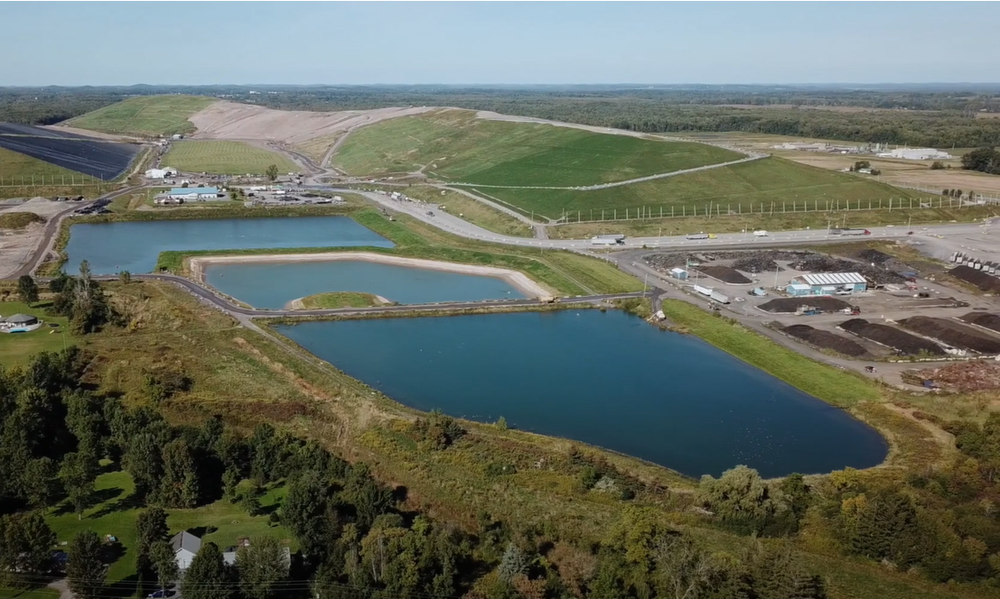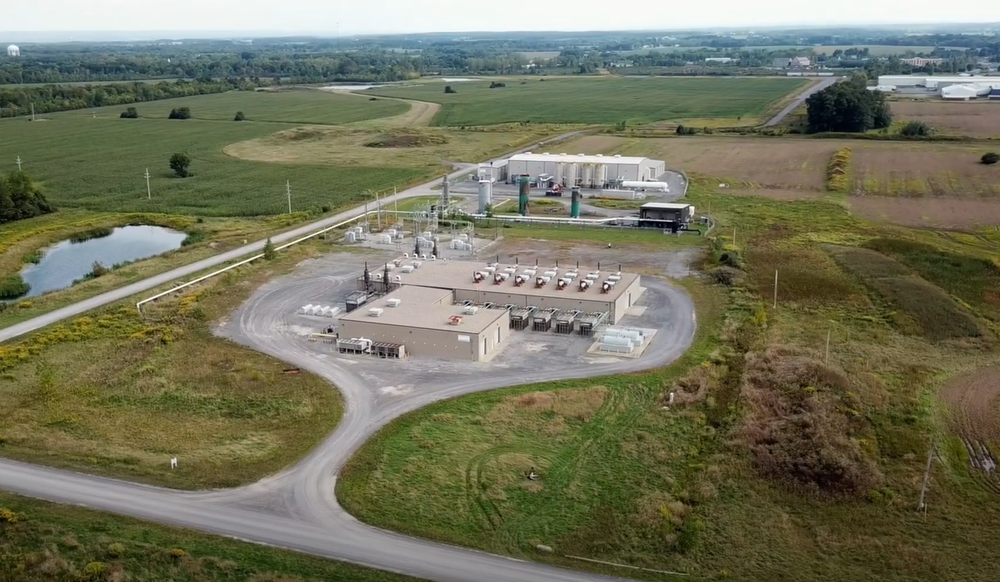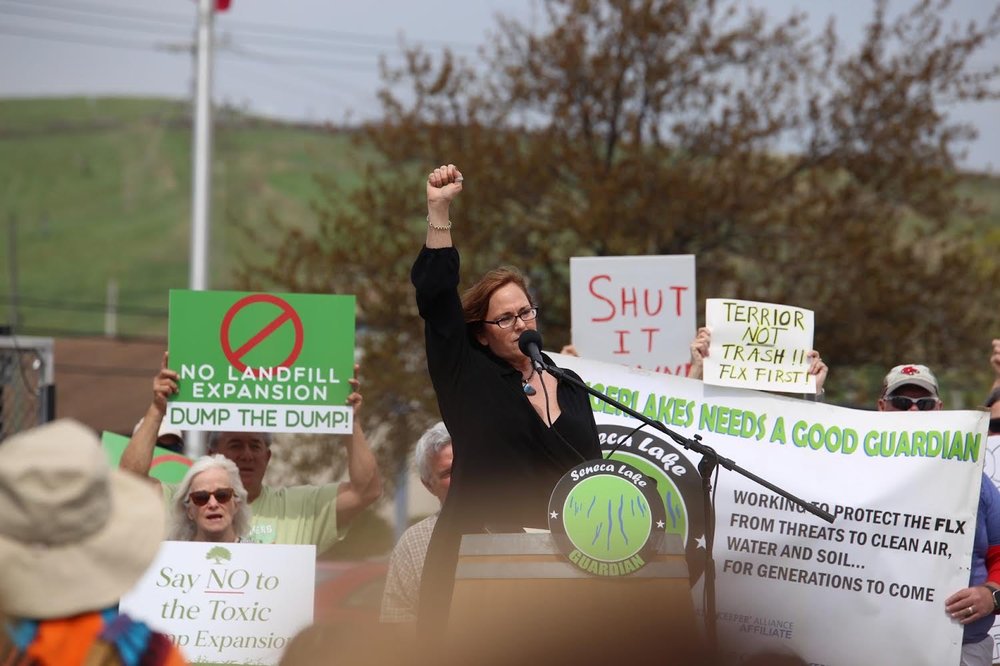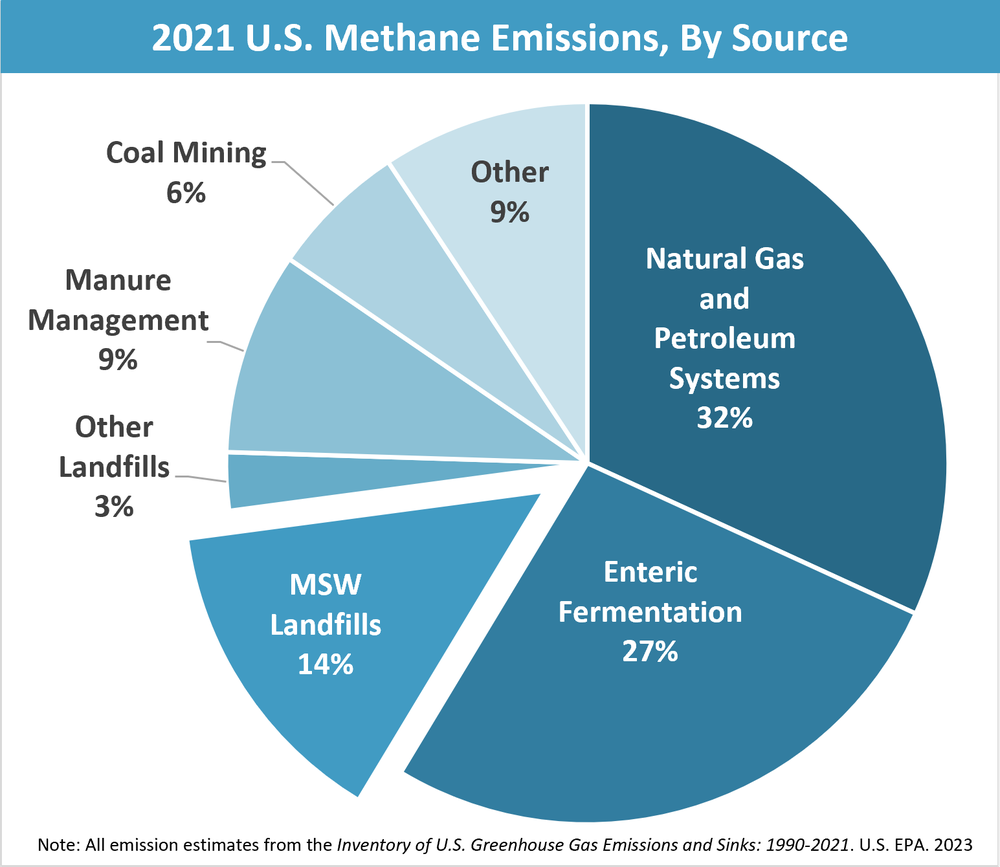Texas company wants to expand New York's largest landfill, despite local opposition
May 16, 2023, 1:45 p.m.
Seneca Energy, a landfill and renewable natural gas operator, could violate the state’s climate law, according to a company assessment of the expansion plan.

The Finger Lakes community surrounding the Seneca Meadows landfill rallied alongside local environment groups during a Zoom conference on Tuesday, demanding the on-time closure of both the nearly 400-acre facility and its renewable natural gas energy operation Seneca Energy by 2025 due to concerns over its impacts on human health and the environment.
Yet the state's largest active landfill has no plans to close any time soon. The garbage dump, located in the towns of Seneca Falls and Waterloo, has applied to expand both its height and its carbon footprint. A company analysis found the resulting energy emissions would run afoul of New York’s signature climate law, the Climate Leadership and Community Protection Act. State regulators responded by advising the site’s operators to revise its conclusion and say that it would be in compliance.
In its draft scoping plan, Seneca Meadows, the landfill owned by Texas-based company Waste Connections, has applied to increase its existing maximum permitting garbage pile height by about 70 feet. Its current elevation is approximately 800 feet.
The upstate landfill already takes in 6,000 metric tons of trash each day, and nearly a third of that refuse comes from New York City. That’s the equivalent of about 30 Statues of Liberty daily.
The expansion would also add about 50 new acres of landfill and overfilling on approximately 200 acres of its currently used areas. The additional capacity would allow the facility to continue accepting garbage 15 years past its scheduled closure date, through 2040.
The facility also produces renewable natural gas and electricity by capturing methane emitted by garbage. Its 18-megawatt gas-fired processing plant is owned by Archaea Energy, recently acquired by oil giant BP. According to the company’s accounting, its plan would violate carbon emissions limits set by the CLCPA.
The project will result in a slight increase of approximately 34,310 TPY [tons per year] CO2 [carbon dioxide] equivalents.
GHD, Archaea Energy’s consultant
“The project will result in a slight increase of approximately 34,310 TPY [tons per year] CO2 [carbon dioxide] equivalents,” Archaea Energy’s consultant GHD wrote in a 2021 memorandum concerning the facility’s permit application for its CLCPA greenhouse gas assessment. “The project may not be consistent with the target goals of the CLCPA regulation.”
But in response to its statement of noncompliance with climate laws, the New York State Department of Environmental Conservation advised Archaea Energy to change its analysis to indicate that it is compliant, justifying the added emissions with the facility’s renewable natural gas production.
“DEC’s analysis determined the total project will reduce greenhouse gas emissions in addition to co-pollutants within a disadvantaged community,” the DEC wrote in a statement to Gothamist via email. “This includes a reduction in formaldehyde emissions; formaldehyde is a hazardous air pollutant.”

While landfill-to-gas projects capture methane emissions that would otherwise go into the atmosphere, the resulting renewable natural gas isn’t any cleaner than burning standard natural gas, and production expansion results in more carbon emissions, as stated by Archaea Energy in its original CLCPA analysis.
The proposal also includes modifications to the facility’s exhaust stacks. The addition of these pollution control measures estimates reductions in carbon monoxide emissions by more than 90%, Formaldehyde by 80% and volatile organic compounds by 75%.
“The initial application included estimates of greenhouse gas emissions accounting which, upon review by Seneca Energy and DEC, were determined to be incorrect,” the DEC wrote in a statement to Gothamist via email.
Why locals are pushing back
During a rally on Tuesday, local environmental group Seneca Lake Guardian demanded an explanation from the DEC concerning why it instructed the company to revise its statement to indicate the Seneca Energy project is compliant.
“We need complete transparency from the DEC about why they advised this change,” Yvonne Taylor, one of the group's founders, said before the rally. “There is overwhelming public support for the closure of this landfill.”
The state agency is currently assessing comments received during the public comment period, which ended April 26.
In analysis of public comments on the landfill expansion proposal by Cornell University data science researcher Owen Marshall, nearly 100% of the statements opposed the expansion.
A group of 428 local businesses and 21 coalitions also opposes the measure, and wrote a letter calling on Gov. Kathy Hochul to phase out the Seneca Meadows landfill as planned.
It is a mountain that can be seen from miles away.
Yvonne Taylor, Seneca Lake Guardian
“It looks like only about 0.4% of the comments were in favor of the landfill expansion,” Marshall wrote via email. “The overwhelming majority of the remaining comments were clearly opposed.”
The landfill is not only trying to expand in order to continue accepting garbage, it is also proposing to expand its power generating facility. Currently, it produces renewable natural gas by capturing and using methane emissions produced by the landfill waste, which is a roughly 50-50 mix of methane and carbon dioxide, natural byproducts of the decomposition of organic material.
According to the company’s latest annual report to state regulators, the site has almost 900 gas wells and produces roughly 116 million kilowatt hours of electricity annually, of which just over 40% is used onsite. The total electricity production is enough power to drive an efficient electric vehicle almost 500 million miles.
Along with the renewal of the facility’s air permit and an update on its emissions, Archaea Energy is proposing to modify the existing site by upgrading its engines to run on natural gas, instead of landfill gas.

The purpose of the plan is to provide enough power to the existing BTU plant that processes the renewable natural gas and to a second plant Archaea Energy is proposing to build. In a statement to Gothamist, the company expressed enthusiasm.
“We are excited about the expansion of the Seneca Energy renewable natural gas plant and its capability to reduce emissions locally,” Megan Baldino, head of corporate communications for BP America, wrote via email. “We believe Seneca’s plans comply with current New York state law requirements, and we continue to engage with the state to provide any additional information requested.”
On top of the concerns over increased climate change pollution from the site, there are also human health concerns. Proximity to a landfill is linked to cancer, renal disease and birth defects.
“It is a mountain that can be seen from miles away,” Taylor said. “So any tourist coming, through into the Finger Lakes is going to be greeted by an extremely foul-smelling mountain of trash, taller than the tallest building in the nearest city of Syracuse, New York."

The presence of a landfill can also have devastating environmental impacts. When rainwater gets into the landfill’s waste, it can create a leachate, which can draw out the chemicals from buried waste.
This leachate has high levels of ammonia that produce nitrate, which creates dead zones in nearby waterways, where animals and plants cannot thrive due to lack of oxygen.
Despite federal regulations requiring liners to hold leachate, the plastic or clay linings are prone to leaks.
Waste Connections did not return a request for comment.
“The community has suffered the burden of this landfill long enough, and we want the landfill to close at its already set closure date of 2025,” Taylor said.
The DEC told Gothamist via email that it has not made a final decision on the permit or if the renewal and modifications to the Seneca Energy project meet the standards of the state’s climate laws.
More than 1,000 e-commerce trucks rumble through Red Hook each day, damaging the air quality Redesigned Starlight Park in Bronx is ‘a win for nature and a win for people’